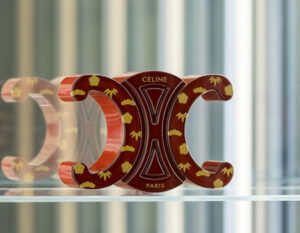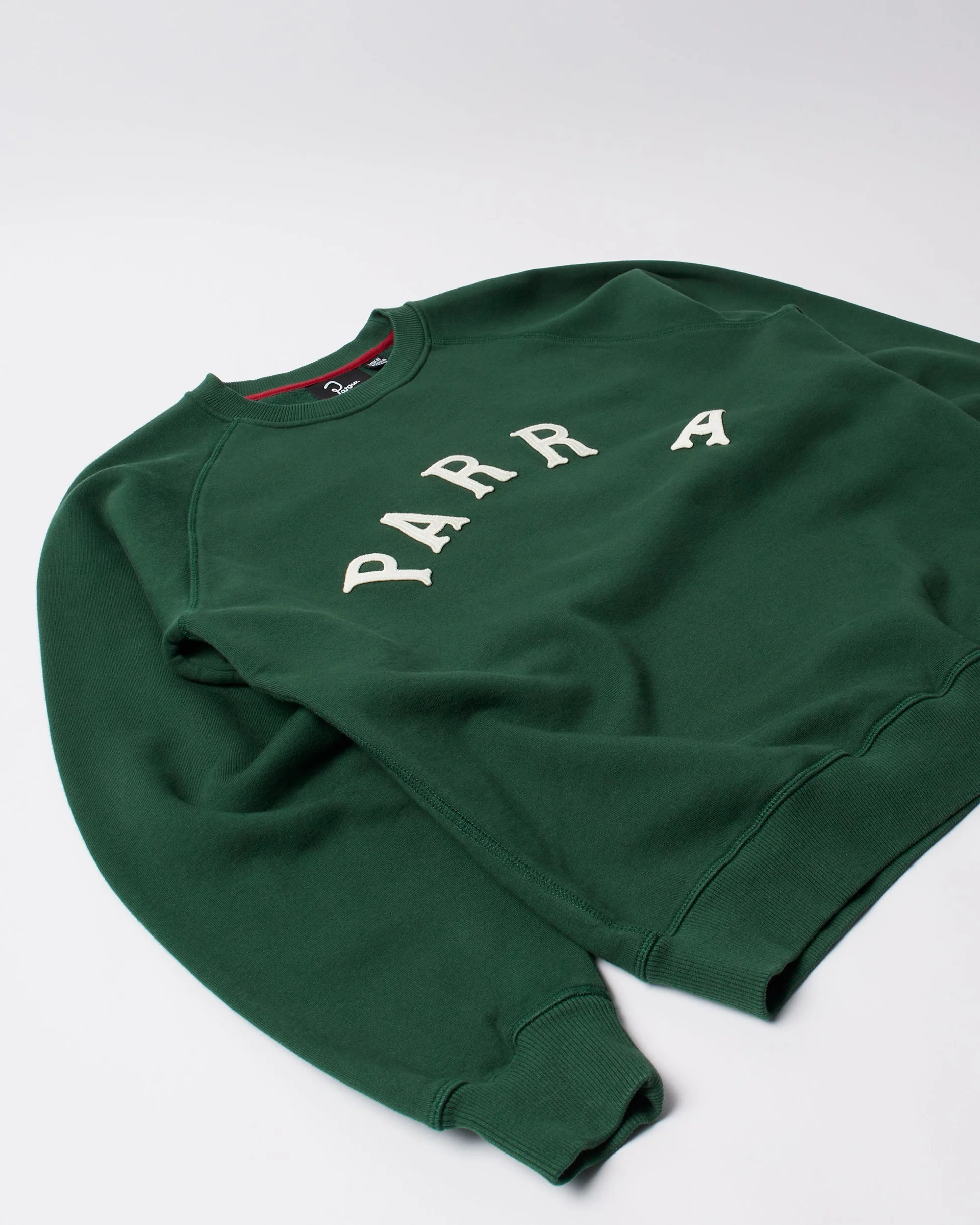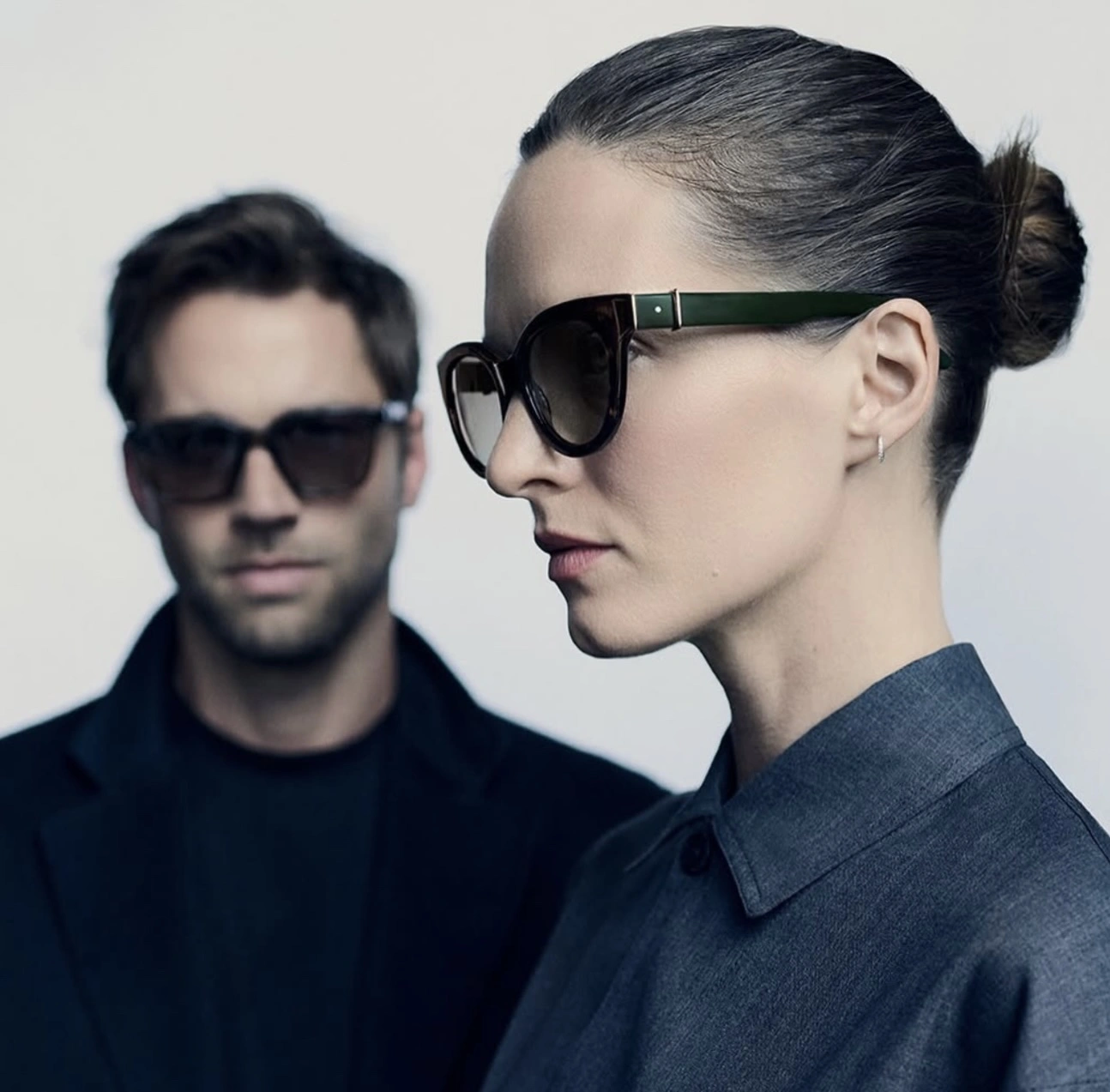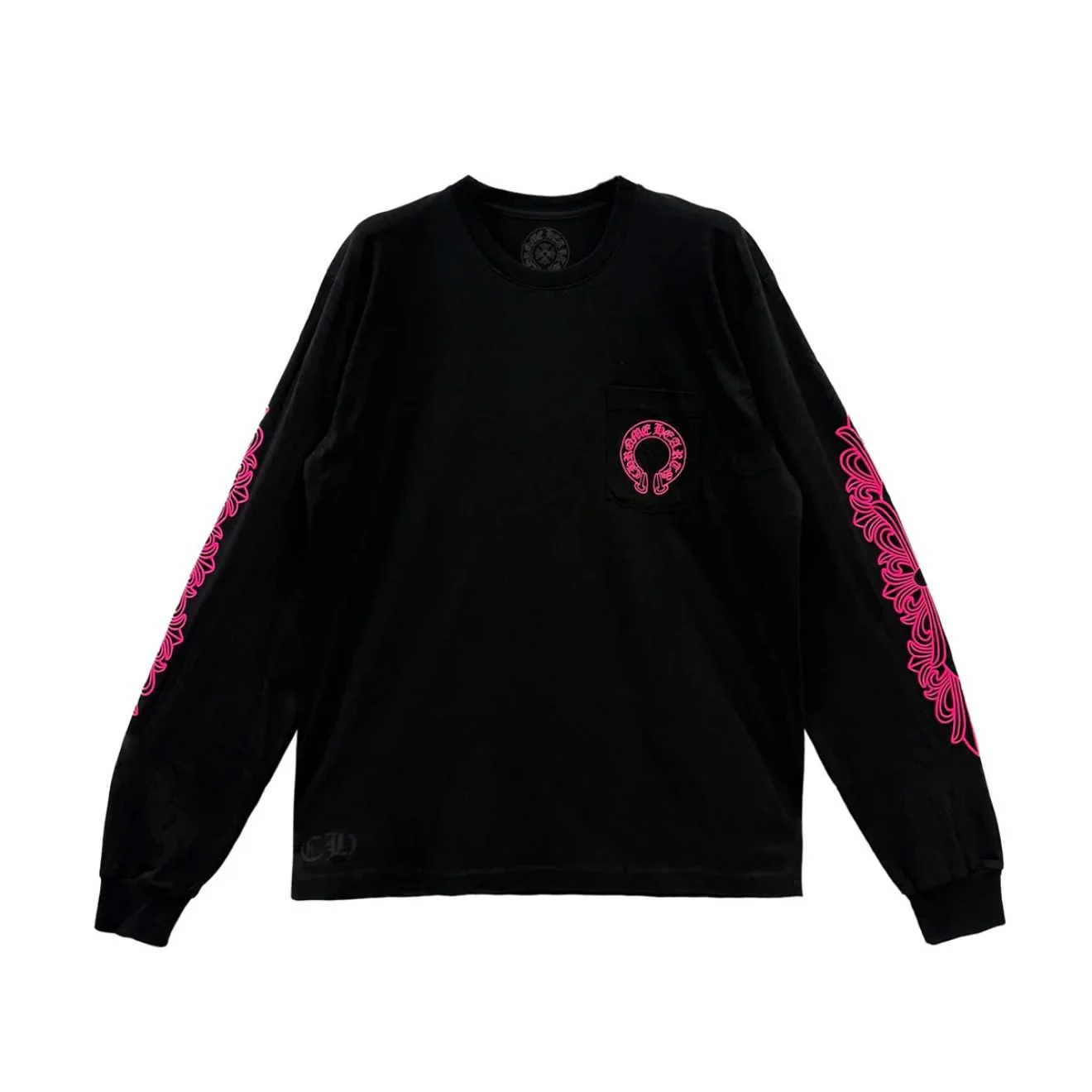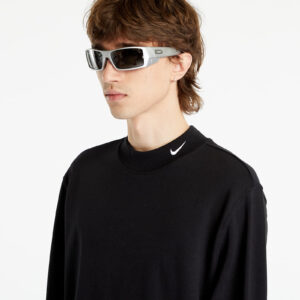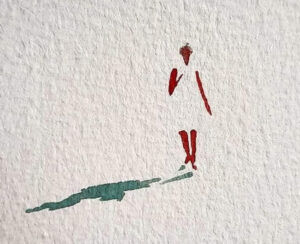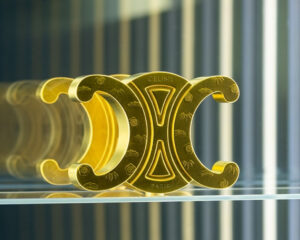
A French Maison in Japan’s Cultural Heartland
CELINE has once again expanded its creative identity beyond the bounds of fashion, entering the realms of craftsmanship, cinema, and cross-cultural celebration with its latest initiative: “CELINE MAKI-E.” Presented as part of the Osaka-Kansai 2025 World Expo, the exhibition is housed within the French Pavilion and runs from April 13 to May 11, 2025. What unfolds inside is not just an art installation but a philosophical gesture—one that bridges continents, centuries, and mediums.
The exhibition takes its name from maki-e (蒔絵), a traditional Japanese lacquerware technique that involves sprinkling gold or silver powder onto still-wet lacquer to create intricate, shimmering designs. In CELINE’s hands, this venerable process is not simply revived but reframed, reinterpreted through the lens of its iconic Triomphe motif, artisanal leather goods, and cinematic storytelling.
The Essence of Maki-e: Craft, Devotion, and Precision
CELINE’s temporary exhibition pays tribute to urushi lacquer art, one of Japan’s most sacred and painstaking traditions. Though urushi originated in China more than 7,000 years ago, it was in Japan where it evolved into a symbol of permanence, labor, and beauty—qualities that resonate with CELINE’s core philosophy under Hedi Slimane’s directorship.
For the MAKI-E exhibition, CELINE partnered with Hikoju Makie, an atelier known for its mastery in classical urushi and maki-e techniques. The collaboration brings to life Triomphe-adorned objects, blending French fashion codes with centuries-old Japanese craftsmanship. Each lacquered piece required weeks—if not months—of meticulous labor, where natural lacquer is applied in thin layers and embellished with gold or silver dust, creating works that shimmer with quiet intensity.
By placing these pieces inside a temporary space at an international expo, CELINE transforms this act of preservation into one of intercultural relevance. This is not heritage locked in a vitrine—it is living tradition, renewed with every visitor’s breath.
A Cinema of Craft: Films by Soshi Nakamura
Amplifying the tactile poetry of the lacquerware is the cinematic presence of Soshi Nakamura, the Japanese filmmaker tapped by CELINE to create two short films that form the emotional backbone of the installation. The first film, “Ten Landscapes of Dreams,” is a lyrical ode to Japan’s natural world, structured as a visual haiku that moves through wind, water, light, and shadow—paralleling the meditative process of urushi.
The second film, “Hands at Work,” is far more intimate and process-driven, chronicling the meticulous gestures of the maki-e artisans at Hikoju Makie. Here, the camera does not glamorize or embellish. Instead, it observes and listens, capturing the rhythm of brushes, the pause between layers, and the almost imperceptible moment when lacquer becomes gold.
Projected on loop within the exhibition space, these films function as rituals of seeing, inviting attendees to reflect on time, care, and transmission—values that undergird both Japanese craft and CELINE’s atelier practices in Paris.
The Triomphe Reimagined in Urushi
At the heart of the exhibition lies the Triomphe motif, an emblem originally inspired by the ornate chains surrounding the Arc de Triomphe. Here, it becomes the vehicle through which CELINE enters Japanese material culture. Lacquered onto wooden panels, wearable objects, and even sculptural forms, the Triomphe transforms into a multivalent symbol—one that speaks simultaneously of French modernism and East Asian antiquity.
In perhaps the most compelling moment of the exhibit, a series of exclusive Triomphe bags—rendered in shades of onyx, jade, and garnet—sit atop urushi-lacquered pedestals. Each pedestal echoes the hand-polished quality of the bags, creating a dialogue between medium and message, container and content.
Visitors are encouraged to move slowly through the gallery, the lighting dimmed to mimic a lacquer studio. In this atmosphere of hushed reverence, every reflection on the surface of a bag or panel feels like a whispered acknowledgment of the past—an invisible line linking the Edo period to 21st-century luxury design.
From Transmission to Transformation
CELINE’s decision to participate in Osaka-Kansai 2025 is neither opportunistic nor promotional. Rather, it feels intentional—an extension of the Maison’s eighty-year heritage, which has always straddled the worlds of elegance and rigor. Under Slimane, CELINE’s language has grown sharper, more architectural, more precise. But here, in Japan, that language softens, curves inward, and allows space for ritual, tradition, and humility.
Transmission is a core theme of both urushi and CELINE. In Japanese lacquerware, the knowledge of application, layering, drying, and embellishing is passed down from master to apprentice. Likewise, CELINE’s leather ateliers operate on a system of apprenticeship and long-form learning, where craft is treated not as trend but as discipline. The MAKI-E exhibition makes this overlap visible—and sacred.
This is not simply about admiration for the East. It is about entering a cultural system and offering reciprocity, honoring its timeline, and allowing it to influence your own.
Japan as a Creative Compass
Japan has long been a muse for European fashion houses—from Chanel’s Métiers d’Art shows in Tokyo to Louis Vuitton’s long-standing collaboration with Japanese artists. CELINE’s involvement with the Osaka World Expo, however, positions itself less as spectacle and more as meditative homage.
It’s worth noting that Hedi Slimane’s personal aesthetic sensibilities—minimalism, black-on-black palettes, sharp silhouettes—are deeply compatible with Japanese design philosophies, such as wabi-sabi (beauty in imperfection) and shibui (subtle elegance). The MAKI-E exhibit doesn’t just acknowledge these parallels; it lives them. The space is quiet, elemental, focused. The materials breathe. The air itself seems lacquered.
Even the name—CELINE MAKI-E—resists branding conventions. It places the technique first, the Maison second. That small gesture encapsulates the respectful subordination of ego to craft, a principle that defines both urushi and CELINE’s recent evolution.
A Lacquered Bridge Between Worlds
In an age when luxury brands scramble to occupy every cultural corner—from NFTs to Formula 1—CELINE’s MAKI-E project offers a different proposition: slow relevance. Rather than exploiting spectacle, it offers reflection. Instead of chasing clicks, it evokes craftsmanship. And in doing so, it builds a lacquered bridge between French savoir-faire and Japanese ancestral knowledge.
No comments yet.


